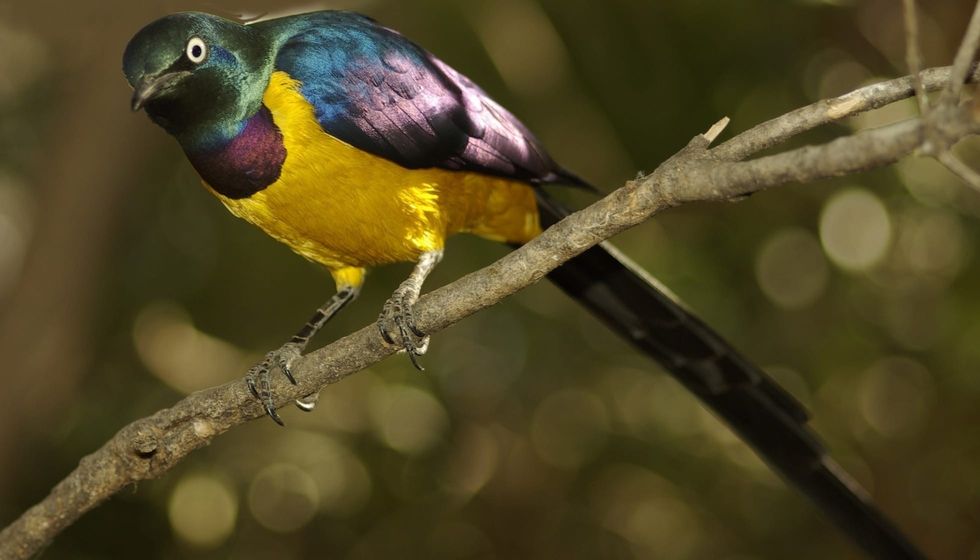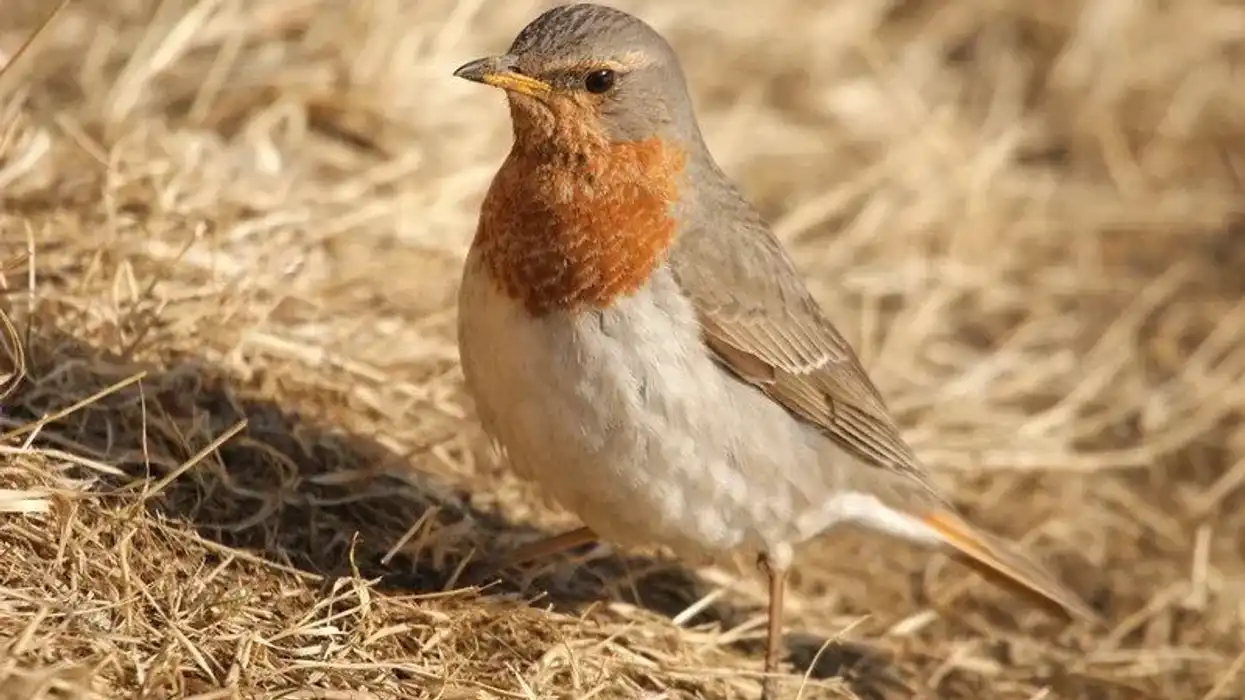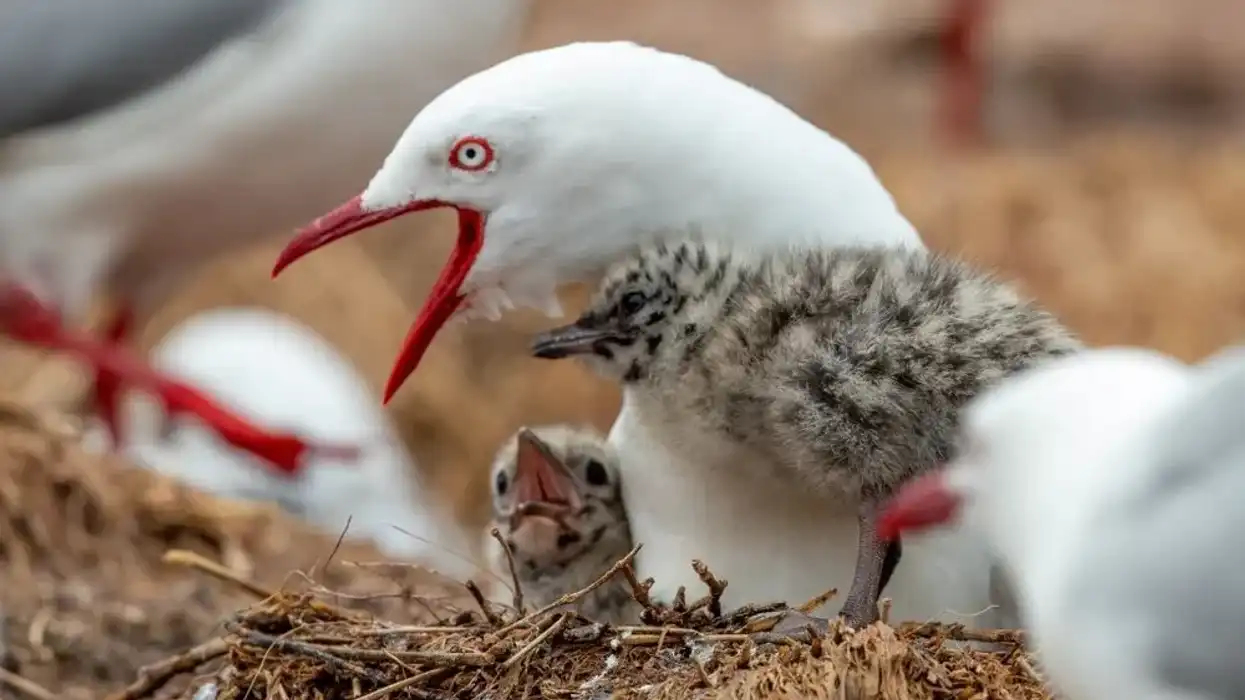Starlings are a group of Old World birds belonging to the Sturnidae. The golden-breasted starling (Lamprotornis regius) is a very colorful medium-sized bird found in Africa's forests.
They were also known formerly by the taxonomical name Cosmopsarus regius. Their solid iridescent feathers look contrasting to the colors of the dry forests that they are found in, which makes them look even brighter.
For this reason, the bird is often referred to as the royal starling of the forest. The long and glossy tail of the golden-breasted starling makes up 60% of the bird's body and it looks unique and stunning!
These starlings often form small groups of three or more birds and live together in tree holes. They are found throughout their range in east Africa.
Golden-breasted starlings are lowland birds that populate open bush and shrubs generally below 3280 ft (1000 m). To know more about the golden-breasted starling species you can go through these interesting facts about the bird.
For more relatable content, check out these European starling facts and metallic starling facts for kids.
Golden-Breasted Starling Interesting Facts
What type of animal is a golden-breasted starling?
A golden-breasted starling (Lamprotornis regius or Cosmopsarus regius) bird is an Old World starling.
What class of animal does a golden-breasted starling belong to?
The golden-breasted starling species of the Passeriformes order and the Sturnidae family belongs to the class Aves, the common class for all birds.
How many golden-breasted starlings are there in the world?
Although the exact population of the golden-breasted starling has not been determined, it is believed that they are more or less abundantly distributed. No substantial threat has been reported that is known to affect this bird's population. Therefore, they are believed to have a stable population without any evidence of a decline.
Where does a golden-breasted starling live?
The golden-breasted starling is a residential species of eastern and northeastern parts of Africa. They occur in large numbers in the African countries of Tanzania, Ethiopia, Kenya, and Somalia. Specifically, these birds populate southern and southeastern parts of Ethiopia.
From there, they move southward to the western part of Somalia and eastern Kenya. They are hardly observed beyond northeastern Tanzania. The Tsavo National Park conserves a large population of golden-breasted starlings.
What is a golden-breasted starling's habitat?
A golden-breasted starling bird usually inhabits dry and arid regions in Africa. It does not show much variation in its habitat choice. The species is found in savannas, woodlands, thorn forests, and scrublands. They nest in the carved tree holes made by other birds like woodpeckers or in the natural cavities of tree trunks.
Who do golden-breasted starlings live with?
The golden-breasted starling is a social bird. They form noisy and highly gregarious flocks during their active months. These birds normally live in groups of three individuals, while some flocks contain a dozen starlings. The family (group) members are often observed helping new parents in raising their young.
How long does a golden-breasted starling live?
The average lifespan of the golden-breasted starling species ranges between 12-14 years of age. However, in captivity, starlings have a life expectancy of up to 24 years.
How do they reproduce?
The breeding season of the golden-breasted starling varies according to their place of origin. For example, in Ethiopia, these birds breed from March to May, while the Somalian population breeds between April and June.
However, the species in Kenya breeds twice a year. They breed with a single partner for life and produce between three and five eggs in a clutch. Both parents take part in taking care of the eggs.
The average golden-breasted starling incubation period lasts for 14 days in captivity and the young birds fledge after 19-22 days. Molting occurs once a year after the breeding season.
What is their conservation status?
The golden-breasted starling has been recognized as a species of Least Concern in the IUCN Red List. Although their population has not been quantified exactly, the common occurrence of the bird in its range prevents them from approaching the threshold of becoming a vulnerable species.
Some conservation measures to protect the animal have been adopted to help protect them in the future.
Golden-Breasted Starling Fun Facts
What do golden-breasted starlings look like?
The golden-breasted starling is a medium-sized bird that flaunts a strikingly colorful plumage. They are one of the most stunning birds in Africa and are, therefore, sometimes called royal starlings.
The upper part of the body is decorated by iridescent blue, green, and purple feathers. The contrasting bright golden yellow breast and belly make the bird look majestic. They have a dark and long tail, but their eyes are pale.
Adults have a metallic green head. The underpart of the tail is bright blue and a metallic violet color stretches over the wings up to the upper part of the tail.
How cute are they?
The golden-breasted starling is a treat to every human eye. The wonderful coloration of a royal starling is super cute!
How do they communicate?
These birds mainly communicate by songs and vocalizations. They usually communicate by producing a warbling call and their alarm and fight shrieks sound very harsh.
How big is a golden-breasted starling?
The length of a golden-breasted starling ranges between 12-15 in (30-37.5 cm). They are larger than the violet-backed starling species, at 8 in (22 cm) in length.
How fast can a golden-breasted starling fly?
The speed of the golden-breasted starling has yet not been determined.
How much does a golden-breasted starling weigh?
The weight of the golden-breasted starling ranges from 1.6-2.2 oz (46-63 g). They weigh less than a regular European starling.
What are their male and female names of the species?
Male and female birds are referred to as 'cocks' and 'hens' respectively.
What would you call a baby golden-breasted starling?
A baby golden-breasted starling is called a 'chick'.
What do they eat?
The golden-breasted starling is a predatory bird that mainly feeds on termites and insects. Snails, lizards, crustaceans, and spiders are also consumed by them.
Are they dangerous?
They are not typically dangerous, but flocks of this bird sometimes act as agricultural pests in crop farms.
Would they make a good pet?
Although the golden-breasted starling is a wild bird, it can be easily domesticated. With proper training, these pet birds might learn to whistle and even talk.
Did you know...
Apart from their bright colors, the glossy sheen of the golden-breasted starling on its upper parts is thanks to a single layer of melanin pigment that is present near the surface of the barbules.
How high can golden-breasted starlings fly?
The golden-breasted starling is generally seen flying 9 ft (3 m) above the ground. They rarely cross this mark.
What do starlings symbolize?
Starlings are believed to have strong spiritual connections with humans. Many believe that they symbolize the traits and skills of people and give us the strength and courage to act upon our decisions bravely.
Here at Kidadl, we have carefully created lots of interesting family-friendly animal facts for everyone to discover! Learn more about some other birds from our Eurasian tree sparrow facts and sparrowhawk facts pages.
You can even occupy yourself at home by coloring in one of our free printable golden-breasted starling coloring pages.









